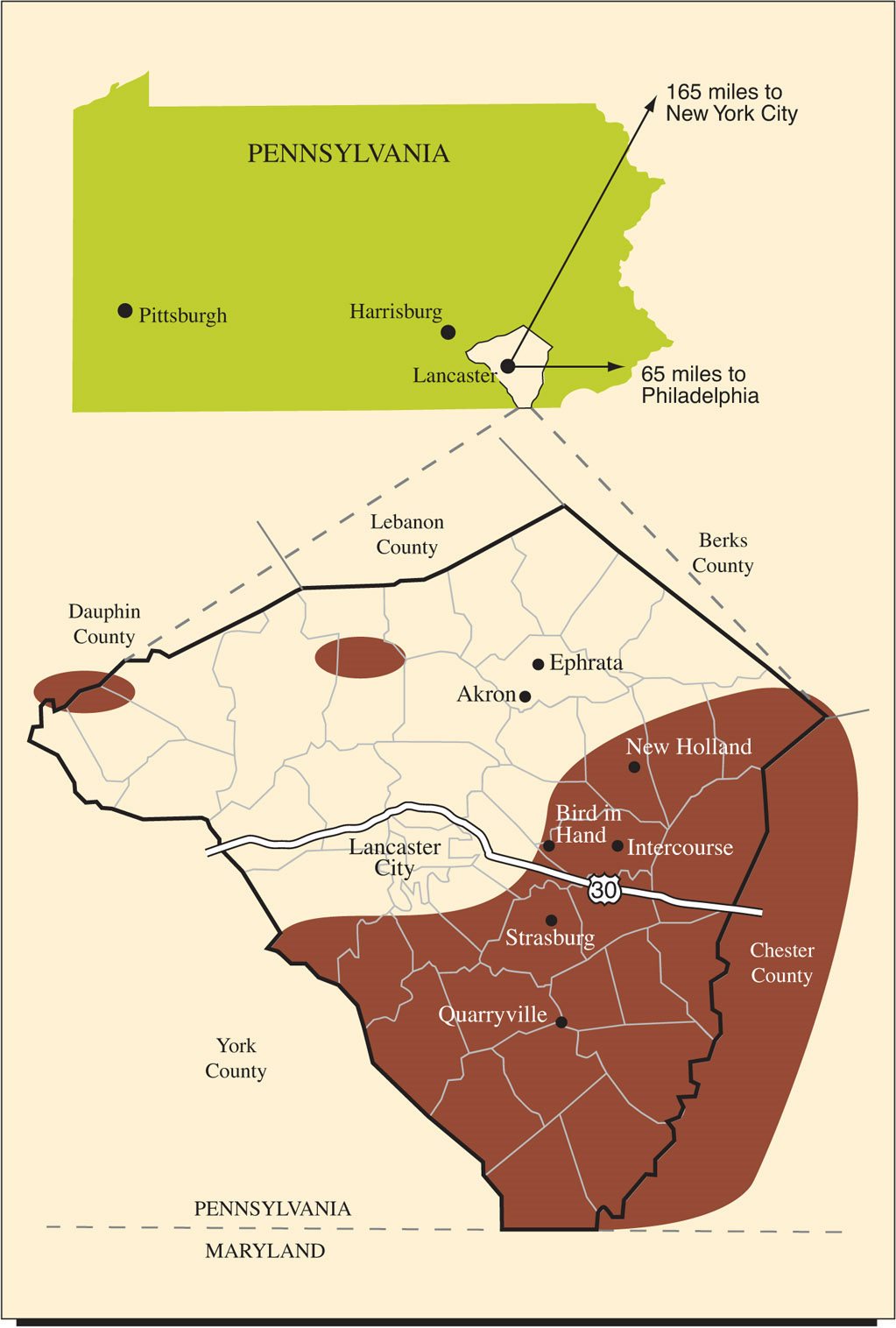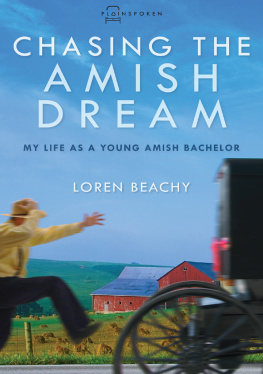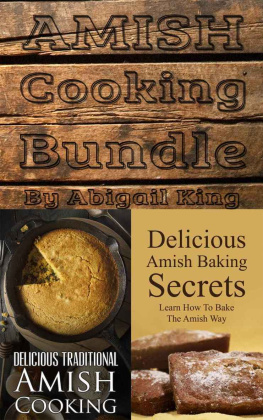
the Amish of
Lancaster County

Also by Donald B. Kraybill
Amish Enterprise: From Plows to Profits with Steven M. Nolt
Amish Grace: How Forgiveness Transcended Tragedy with Steven M. Nolt and David L. Weaver-Zercher
Concise Encyclopedia of Amish, Brethren, Hutterites, and Mennonites
Horse-and-Buggy Mennonites: Hoofbeats of Humility in a Postmodern World with James P. Hurd
On the Backroad to Heaven: Old Order Hutterites, Mennonites, Amish, and Brethren with Carl Desportes Bowman
Renegade Amish: Beard Cutting, Hate Crimes, and the Trial of the Bergholz Barbers
Simply Amish
The Amish with Karen Johnson-Weiner and Steven M. Nolt
The Amish and the State
The Amish Struggle with Modernity with Marc A. Olshan
The Amish Way: Patient Faith in a Perilous World with Steven M. Nolt and David L. Weaver-Zercher
The Riddle of Amish Culture
Published by Stackpole Books
An imprint of The Rowman & Littlefield Publishing Group, Inc.
4501 Forbes Blvd., Ste. 200
Lanham, MD 20706
www.rowman.com
Distributed by NATIONAL BOOK NETWORK
800-462-6420
Copyright 2019 by The Rowman & Littlefield Publishing Group, Inc.
Photographs by Daniel Rodriguez
Design by Beth Oberholtzer
Map by Eberly Designs
All rights reserved. No part of this book may be reproduced in any form or by any electronic or mechanical means, including information storage and retrieval systems, without written permission from the publisher, except by a reviewer who may quote passages in a review.
British Library Cataloguing in Publication Information available
Library of Congress Cataloging-in-Publication Data available
ISBN 978-0-8117-3815-6 (paperback)
ISBN 978-0-8117-6816-0 (e-book)
 The paper used in this publication meets the minimum requirements of American National Standard for Information SciencesPermanence of Paper for Printed Library Materials, ANSI/NISO Z39.48-1992.
The paper used in this publication meets the minimum requirements of American National Standard for Information SciencesPermanence of Paper for Printed Library Materials, ANSI/NISO Z39.48-1992.
Printed in the United States of America

The Amish of Lancaster County

These girls are carrying homemade meadow tea to family members baling alfalfa hay on a hot day.
L ancaster County, Pennsylvania, has long enjoyed the reputation of being the Garden Spot of the World. The Amish of the Lancaster area have contributed to the countys fine agricultural reputation. Their distinction as one of Americas most colorful and interesting religious groups extends far beyond eastern Pennsylvania. Indeed, many of the 8.3 million tourists who travel to Lancaster County each year come to catch a glimpse of Amish life.
Amish people live in thirty-four Pennsylvania counties. But half of the states 75,000 Amish reside in the Lancaster area, which is North Americas most densely populated Amish community. Lancaster County and Holmes County, Ohiothe two largest settlements in North Americaeach have about 37,000 children and adults. About half of the Amish population is under eighteen years of age.
In the early 1900s, Lancasters Amish numbered about 500. A century later, their population had grown to 27,000, with an additional 10,000 offspring living in settlements outside the Lancaster area. The expansion of the Lancaster settlement mirrors Amish growth nationally. Now scattered in thirty-one states and several Canadian provinces, the total population (children and adults) numbers about 325,000. Nearly two-thirds of Americas Amish live in Ohio, Pennsylvania, and Indiana.
Different Amish communities have different customs. Some non-Lancaster Amish forbid automatic milking machines, which are common in the Lancaster community. Amish in some other areas drive buggies with different color topsblack, yellow, or whitewhereas the Lancaster carriages are gray. Many of the Lancaster Amish do not use power lawn mowers or ride bicycles, but these items are accepted by some other Amish groups. The Lancaster Amish have indoor plumbing and contemporary bathrooms. In sharp contrast, some of the more traditional Amish in other settlements use outdoor toilets. In general, the Lancaster Amish are one of the more progressive subgroups in their use of technology.
Despite the diversity, several common badges of identity unite most Amish groups across North America: horse- and- buggy transportation, the use of horses to pull machinery, plain dress in many variations, a beard and shaven upper lip for men, a prayer cap for women, Pennsylvania Dutch (also known as Pennsylvania German), worship in homes, private one- room schools, and taboos on public electricity. These symbols of solidarity unite the Amish world and mark its boundaries with the larger society.

Alfalfa is a major crop raised for hay to feed cows on dairy farms. This farmer is raking dried alfalfa into rows to prepare it for baling. Mules pull the rake.
Sprawling to the east and south of Lancaster City, the Amish community is organized into some 225 church districts, or congregations. Each district has twenty to forty families totaling, on average, about 170 adults and children. Streams, roads, and township lines set the boundaries of each district, which forms the basic social and religious unit of the community.
Families participate in the church district that encircles their homes. The geographic size of districts varies with the density of the Amish population. In small districts, families often walk to the church services, which meet every other Sunday and rotate from home to home. As districts increase in members, they divide. A bishop, two or three preachers, and a deacon, without formal pay or education, share leadership responsibilities in each district. The district is church, club, family, and precinct all wrapped up in a neighborhood parish.

The Lancaster Amish settlement, concentrated in the dark areas on the map, includes western Chester County.
The Amish own private property and live side by side with non-Amish neighbors on farms, along country roads, and in small villages. U.S. Route 30 runs east and west through the county and divides the settlement physically as well as socially. Many of the church districts south of this route have a higher proportion of farmers and tend to be more conservative than those to the north.
Nestled in southeastern Pennsylvania, sixty- five miles west of Philadelphia, Lancasters fertile acres face the steady press of urbanization. Indeed, the county has lost hundreds of farms in recent years. One of the fastest- growing counties in Pennsylvania, Lancaster grew from 470,000 in 2000 to a projected 540,000 people by 2020. High land costs, growing suburbanization, and the continuing expansion of the Amish community have prodded some Amish families to head for Indiana, Kentucky, New York, Wisconsin, and other parts of Pennsylvania in search of cheaper farmland and rural isolation.
Next page









 The paper used in this publication meets the minimum requirements of American National Standard for Information SciencesPermanence of Paper for Printed Library Materials, ANSI/NISO Z39.48-1992.
The paper used in this publication meets the minimum requirements of American National Standard for Information SciencesPermanence of Paper for Printed Library Materials, ANSI/NISO Z39.48-1992.


